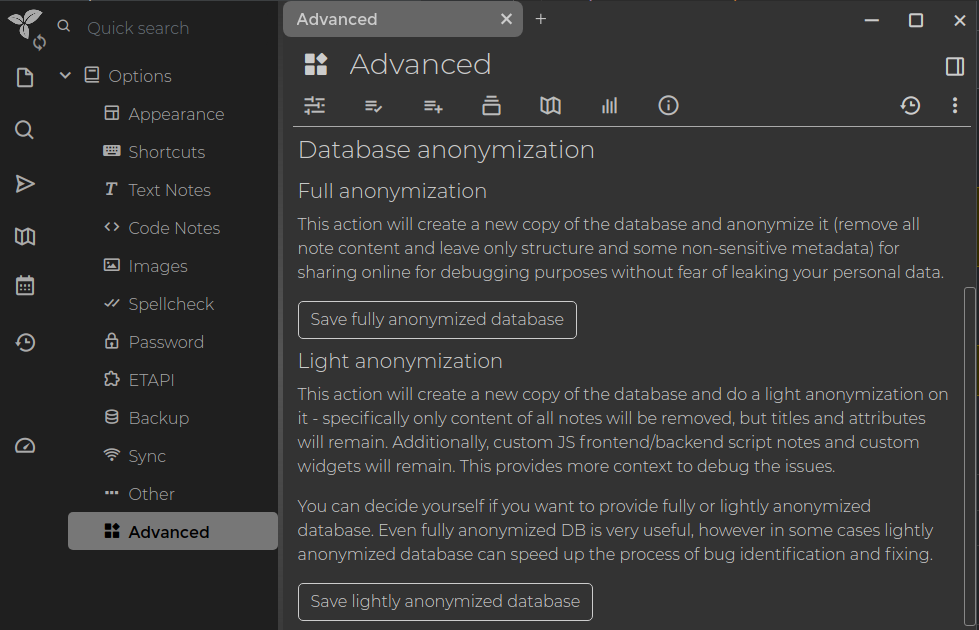Docs
Anonymized Database

In certain scenarios, understanding the structure of a database is crucial for troubleshooting issues. However, sharing your actual database file with personal notes is not advisable. To address this, Trilium offers a feature to anonymize the database. This feature can be accessed via Menu -> Options -> Advanced tab.
This feature creates a copy of your database with all sensitive data removed. Specifically, it strips out note titles, contents, revisions, history, and some non-system attributes while retaining the overall structure and metadata, such as modification dates. After anonymization, the database undergoes a vacuuming process to ensure no sensitive data remnants remain in the file. The anonymized database is saved in the anonymized directory within the data directory, making it safe to share with bug reports.
This will create a copy of your document and remove all sensitive data (currently note titles, contents, revisions, history and some of the options, and non-system attributes) while leaving all structure and metadata (e.g. date of last change). After this is done, the database is VACUUMed to make sure there’s no stale sensitive data in the document file. The resulting file is stored in anonymized directory (placed in the data directory). You can safely attach it to a bug report.
Command Line Anonymization
If your database is corrupted to the point where Trilium cannot start, the anonymization process can still be executed via the command line:
node src/anonymize.js
Run this command from the directory containing Trilium’s source files, typically found in the resources/app directory for desktop builds.